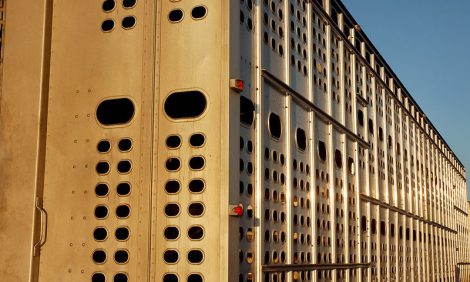



Optimising Efficiencies in the Feedyard
There is little debate when it comes to the economic importance of feed efficiency in feeding cattle, writes Chad Zehnder from Land O’ Lakes Purina Feed.The effect of feed efficiency on profitabililty is even greater with today’s ration costs;
well illustrated by the fact that currently the economic impact of a five per cent improvement in feed
effeciency is four-fold greater than the same increase in ADG. With that said, in times of high
feed cost, often optimization, rather than maximization, of performance parameters is a more
economically sound choice.
By-product inclusion can be used as an example, where concerns
with dietary fat, sulfur and moisture levels as well as their effects on performance will most often
dictate inclusion levels in diets.
However, when a wide price spread exists between corn and
local by-product opportunity, dietary inclusion levels beyond what might maximize feed
efficiency and average daily gain may be warranted. While performance may not be maximized,
often we are able to optimize cost of gain and return.
There are obvious influencers on feed efficiency and a tremendous amount of time and effort is
devoted to fine tuning these practices and technologies.
Implant program, cattle genetics, cattle
comfort/facilities and feed additives such as ionophores and beta agonists all play a significant
and known role in cattle performance and feed efficiency.
How these factors effect feed
efficiency can be directly measured by its most familiar measurement: feed intake (or delivery)
over average daily gain. Another way to look at feed efficiency of an operation is to look at total
feed purchased or stored (harvested) divided by the pounds of gain produced in the feedlot.
Doing so opens the door to a whole new set of parameters that have the potential to be measured
and subsequently improved. Three areas of emphasis that might be considered include feed
delivery and mixing, feed shrink, and feed selection.
A mixer wagon audit is a valuable tool in determining the effectiveness of your TMR wagon.
Much consideration is given to loading sequence and its effect on ration consistence and mixer
performance. Loading sequence is just one piece of the puzzle; a check on scale accuracy should
also be part of your routine mixer maintenance.
A scale error has the potential to not only
change the composition of the diet you intended to feed, but can be a major source of feed shrink,
especially as one considers shrink on low inclusion ingredients.
Simple things that require very
little effort to change can also help greatly improve mix consistency. Overloading a mixer, not
loading supplement in the middle of mixer, having the mixer on uneven ground when mixing or
loading all can change the performance of a mixer wagon.
Feed shrink through storage can represent a large economic loss in the feedyard that often goes
unnoticed. Ensiling feeds allows for both the storage of high moisture feeds and presents an opportunity to increase the digestibility of feedstuffs grown in an operation. It also provides the
opportunity for shrink; unfortunately, dry matter losses as much as 20 per cent are not uncommon in
many silage bunkers. Proper packing at time of harvest, adequate covering of ensiled feed
bunkers, and proper face management at feedout will all help prevent the introduction of oxygen
to the ensiled feeds and lessen feed spoilage.
Timing of harvest to assure proper feedstuff
moisture is also critical; recognizing that this is often easier said than done.
While the use of
inoculants and preservatives consistently offer returns on investment, the return is potentially
larger when feedstuffs must be put up at less than ideal moisture conditions. By-products,
particularly distillers, have changed the way we feed cattle.
They have also presented more
moisture to our feedstuffs and rations; this must be taken into consideration when figuring
optimal storage length and life of the ration in the bunk.
Shrink of 15 per cent or greater can occur
when storing wet or modified distillers for extended periods of time; losses of 5 to 10 per cent can be
seen even in ideal storage and timely use of wet byproducts. This shrink and loss should be
taken into consideration when setting a value on any by-product.
Decisions on how corn would be harvested were of much debate this past year. While it is
understandable that producers wanted to keep their corn marketing options open, the decision to
put up more dry corn might not always be the right decision in the feedyard. As previously
mentioned, digestibility is improved in corn harvest methods allowing a higher moisture product.
In addition, harvesting corn as silage or earlage has the potential for a feedyard to produce more
pounds of beef per acre.
The past year’s hay crop was reported to be the smallest on record, this
was not only due to drought conditions of the south, but also a result of more acres going to row
crop. As hay and roughage supplies are likely to remain tight, feedyards will need to continue to
explore methods to utilize low quality roughages in diets and reduce overall roughage inclusion
in feedyard rations.
Feed efficiency continues to be a driving factor in cattle feeding profitability. It is important to
make sure all aspects of an operation are considered when evaluating an operations efficiency.
Feed mixing and delivery, storage and shrink, and ration composition can all have significant
impacts on an operations overall feed efficiency.


